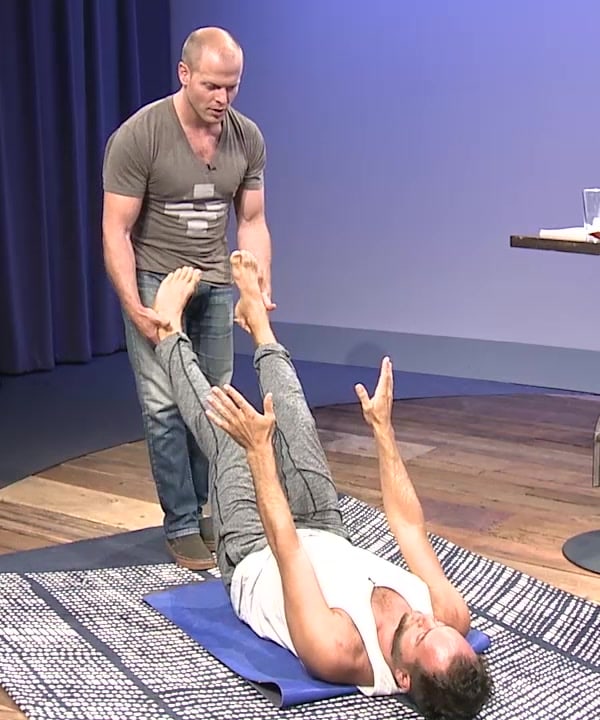Is it safe to take melatonin on a regular basis?
Sources:
Melatonin, a hormone naturally produced by the body, is widely used as a sleep aid. While beneficial for improving sleep in cases like jet lag or occasional sleep disturbances, its effectiveness and safety when used regularly are nuanced.
Effectiveness
- Melatonin generally helps individuals fall asleep slightly faster, but the overall effect is relatively mild. Studies show it may decrease the time to fall asleep by only about five minutes compared to a placebo 1.
- It does not significantly change the quality or duration of sleep for most people, especially those under 50 who are not jet-lagged 2.
Safety
- Melatonin is considered safe for adult use with minimal side effects. It does not produce significant toxicity even at high doses, and no studies have shown it to be harmful 1.
- However, there are concerns about the potential suppression of natural melatonin production with long-term use. There's also an unregulated market in some regions, such as the U.S., where the actual content of melatonin supplements can vary widely from what is listed 2.
Recommendations
- Melatonin should ideally be used intermittently rather than consistently to avoid potential dependency and disruption of the body's natural sleep-wake cycles 3.
- It's advised to use low doses (around 0.5 to 3 mg) to mimic natural levels more closely and prevent overwhelming the body's own melatonin production 2.
In summary, using melatonin can help with sleep initiation in specific situations, but its benefits for long-term, regular use are limited and could potentially lead to dependence or disruption of natural physiological processes. It's essential to consult a healthcare provider for personalized advice and to consider these factors carefully.
RELATED QUESTIONSTell me about Adam Schafer
Sources:
Adam Schafer is a recognized fitness professional and the co-host of the popular []. His expertise spans health, fitness, and business, making him a well-regarded figure in the wellness community. Schafer is noted for his unique approach to wellness and body composition, especially relevant as he navigates life as a father. His experience provides valuable insights into weight loss, lifestyle, and overall health, engaging a broad audience of listeners. Additionally, Adam Schafer has appeared on the [High Intensity Health], further expanding his influence and outreach in the health and fitness arena.
RELATED QUESTIONSWhat are the most common supplements 50+ year old men are advise to take?
Sources:
Here are some commonly recommended supplements for men over the age of 50, as discussed by experts in fitness and health:
- Fish Oil: This supplement is often recommended for its heart health benefits, contributing to improved cardiovascular function and potentially reducing inflammation.
- Creatine: While commonly associated with muscle growth, creatine is also suggested for enhancing cognitive function in older adults. A typical daily intake might range from 2.5 to 5 grams.
- Multivitamins: These can help to reduce the risk of cancer and fill dietary gaps that may not be covered by diet alone, particularly as dietary habits may change with age.
- Vitamin D and Calcium: Both are crucial for bone health, helping to prevent osteoporosis and bone fractures.
- Protein Supplements: A higher protein intake is encouraged as it supports muscle maintenance, which is crucial for aging individuals to prevent muscle loss.
- Adaptogens like Ashwagandha: These can help manage stress and potentially support hormonal balance.
- Nutrient-Dense Foods: Instead of supplements, consuming whole foods like eggs, meat, and fish that are rich in essential nutrients is highly encouraged for overall health.
It's important for individuals, especially those with specific health conditions or those taking other medications, to consult healthcare professionals before beginning any new supplement regimen 1 2 3.
RELATED QUESTIONSAre there any differing opinions on the necessity of supplements for men over 50?
Sources:
There are indeed differing opinions regarding the necessity of supplements for men over 50. Here are some key perspectives shared by experts:
-
Limited Efficacy for Some: Some experts argue that certain popular supplements might not be as effective as often claimed. For instance, testosterone boosters are unlikely to significantly raise testosterone levels in men who already have normal levels. It’s noted that even if such supplements are effective, the increase in testosterone might be too small to have any tangible health benefits 1.
-
Prioritizing Lifestyle Over Supplementation: emphasizes that rather than immediately turning to supplements, older adults should first focus on improving sleep and managing stress. He mentions that while some supplements like creatine and fish oil can be beneficial, they are most effective when combined with a healthy lifestyle 2.
-
Food as Medicine: Both Kyle Gillett and highlight that many of the benefits sought from supplements can often be better achieved through diet. They argue that food should be the first line of improvement for health, with supplements only considered as an additional support if necessary 3.
-
Supplements as Tools, Not Solutions: Supplements are described as tools that can help achieve specific health goals, not as standalone solutions. The advice is to use them judiciously, considering both the potential benefits and risks 3.
-
Concerns Over Regulation and Efficacy: The supplement industry is noted by for being largely unregulated, which can make it difficult to trust the quality and efficacy of products. This leads to recommendations that any supplementation should be done in consultation with healthcare professionals 4.
These varying opinions underscore the importance of approaching supplementation with a critical eye and ideally, in consultation with healthcare professionals, especially for men over 50.
RELATED QUESTIONS-
How can someone personalize their supplement intake based on their specific health needs or conditions?
Sources:
Personalizing supplement intake based on specific health needs or conditions involves a tailored approach that considers an individual's unique health profile and goals. Here's a summary of how this can be achieved according to experts:
-
Assessment of Individual Needs: Companies like Persona offer personalized vitamin solutions by conducting a thorough assessment. They use a detailed questionnaire that covers goals, lifestyle, allergies, diets, and even prescription medications to personalize recommendations 1.
-
Genetic and Molecular Analysis: Advanced techniques involve analyzing genetic information and molecular data to tailor recommendations. For instance, Viome uses a precision approach where the recommendations are based on understanding the molecular needs identified through genetic analysis and biomarker examinations 2.
-
Integration with Daily Regimens: Supplements are suggested to be timed according to their biological impact. For example, energy supplements should be consumed in the morning and sleep aids at night to optimize their efficacy and avoid negative interactions 1.
-
Continuous Adjustment and Personal Biohacking: Personalization isn't a one-time specification but an ongoing process. Users are encouraged to adjust their supplement intake based on continuous learning and changes in their health status, allowing even further personalization over time 2.
This approach not only helps in meeting specific nutrient requirements but also avoids the risks associated with unnecessary or excessive supplementation. Always consult a healthcare provider before starting any new supplement, especially when aiming for personalization based on health conditions.
RELATED QUESTIONS-
What are the best stretches for tight hips.
Sources:
Here are some effective stretches recommended by experts for alleviating tight hips:
-
Couch Stretch: recommends the couch stretch for opening up the hip flexors. This stretch is especially useful after prolonged periods of sitting. He advises performing this stretch near a counter for support 1.
-
Yoga Hip Openers: Incorporating yoga hip openers into your routine can also significantly help in relieving hip tightness. These stretches are part of a regular practice to maintain flexibility 1.
-
Static Hamstring Stretch: For immediate relief from tight hips, suggests static hamstring stretches, which involve lying on your back and extending the leg upwards to stretch the hamstring. This can alleviate associated lower back and hip pain 2.
-
90 90 Stretch: This active stretching technique is great for the hips. It involves sitting with each leg bent at 90 degrees, one in front and one to the side, and leaning forward to deepen the stretch in the glutes. emphasized its use for improving hip mobility 3.
-
Cat Cow Stretch: This gentle flow between two poses helps to stretch the hip flexors, along with the back and neck, promoting mobility and flexibility. Mentioned by , it's a simple stretch that can be done daily 1.
Integrating these stretches into a regular routine can help alleviate tightness in the hips and improve overall flexibility. Remember, consistency is key for lasting benefits. Always ensure proper form to prevent injury and consider consulting with a physical therapist or trained instructor if you're unsure about the techniques.
RELATED QUESTIONS-
Can you provide detailed instructions for each stretch?
Sources:
Detailed Instructions for Stretches to Alleviate Tight Hips:
1. Couch Stretch
The Couch Stretch is valuable for opening the hip flexors, particularly after extended periods of sitting. Here's how to perform it:
- Place your knee close to a wall or couch, allowing the shin of that leg to rest against the surface.
- Position your other foot flat on the ground, as if you're in a lunge.
- Keep your upper body upright, engage your core, and push your hips forward.
- Hold the position while maintaining a neutral spine to focus the stretch on the hip flexors of the rear leg.
- advises holding for 30 seconds or more while practicing deep breathing to enhance the stretch's effectiveness 1.
2. Yoga Hip Openers
These stretches are perfect for releasing tightness in the hips:
- Several posture variations exist, such as Pigeon Pose, Cow Face Pose, and Butterfly Stretch.
- Focus on maintaining each position with proper form to maximize the stretch on the hip muscles.
- Breathing deeply and holding each stretch for a few breaths will facilitate relaxation and deeper stretching.
3. Static Hamstring Stretch
Particularly useful for relieving tightness in the back and hips:
- Lie on your back, and lift one leg upward while keeping it straight. Use a towel or strap around the foot if needed to help extend the leg.
- Gently pull the leg towards you while keeping both hips on the ground.
- Hold the stretch for 20-30 seconds, ensuring you feel a controlled stretch in the hamstring, not discomfort.
4. 90 90 Stretch
A fantastic active stretch for the hips, improving flexibility and relieving tightness:
- Sit on the floor and form two 90-degree angles with your legs, one in front and the other on your side.
- Place hands to the floor for support and pivot your torso towards the front leg, leaning forward to deepen the stretch.
- Aim to hold each position for 30 seconds while focusing on deep breathing to relax into the stretch 2.
5. Cat Cow Stretch
This stretch is mild and suitable for warming up the spine and hips:
- Begin on all fours, ensuring knees are under hips and hands under shoulders.
- Alternate between arching your back (Cow Pose) and rounding it towards the ceiling (Cat Pose), synchronizing the movements with your breath.
- This dynamic movement helps loosen the spine, back, and hip flexors. integrates this into daily routines for sustained mobility 3.
Regular practice of these stretches will help alleviate hip tightness and improve your overall flexibility and mobility. Make sure to perform these stretches consistently and gradually increase the intensity to assess your tolerance and enhance effectiveness.
RELATED QUESTIONSList clips similar to "Unlocking Mobility"
Sources:
Here are some clips similar to "Unlocking Mobility" that discuss improving physical mobility and relevant techniques:
-
Improving Mobility from "" in the . This clip features a discussion on various techniques including static and dynamic stretching, and self-myofascial release (SMR), focusing on improving movement through better mobility and posture management 1.
-
Mobility Benefits from "" in the . Angelo Gingerelli elaborates on the benefits of mobility through strength training for runners, emphasizing posture and breath control for improved performance and reduced injury 2.
-
Improving Mobility from the same episode as above, discussing mobility in the context of running and how specific training can improve mobility related to fundamental movements necessary for running 3.
-
Improving Running Technique from "" in the . This clip focuses on detailed techniques and practical exercises to improve mobility and strengthen running-specific movements 4.
-
Unraveling Mobility Myths from "" on the . Dr. Quinn Henoch discusses common misconceptions about mobility, emphasizing evidence-based approaches to improving functional mobility across various tasks 5.
-
Improving Mobility from "" on the . Nate Helming shares easy and effective strategies to incorporate mobility into daily routines, thereby improving overall movement flexibility and reducing injury risks 6.
-
Mobility Training Tips from "" on the . The hosts discuss strategies for focusing on major mobility issues and integrating mobility with resistance training for better results 7.
-
Mobility and Strength from "" on the . This clip emphasizes the synergy between mobility and strength training, countering misconceptions that mobility exercises are unhelpful, highlighting their crucial role in pain management and injury prevention 8.
RELATED QUESTIONS-
Are there any additional stretches for hip mobility?
Sources:
Here are additional stretches and mobility exercises that can further help with hip mobility:
1. Active Stretches and Muscle Activation
This approach incorporates exercises that not only stretch the muscles but also activate them through the entire range of motion, such as in kin stretches. These exercises are effective for addressing instabilities and improving strength in the hips 1.
2. Dynamic Flexibility and Massage
Using tools like hard massage balls can enhance the mobility of the feet, which indirectly benefits hip alignment and stability. Implementing dynamic flexibility exercises and regular massage can have significant positive impacts on hip mobility 2.
3. Body Weight Movements and Control
Focusing on bodyweight movements that enhance strength and coordination can significantly improve hip mobility. Exercises like standing hip circles, controlled to improve strength and coordination, are recommended for enhancing joint movement and preventing injuries 2.
4. AcroYoga and Movement Routines
AcroYoga can increase hip mobility through a combination of yoga and acrobatics that expands flexibility and healing practices. This form of exercise promotes not only flexibility but also joint health through active and engaged stretching 3.
5. Yoga and Pilates
Adding yoga and Pilates to your routine can expand your movement practice focusing on mobility and core strength. These practices can significantly enhance flexibility and mobility through various poses and muscle engagement techniques 4.
Each of these stretches and mobility exercises offers unique benefits and can be tailored to your specific needs. Regular practice alongside consistent engagement in various forms of these exercises can lead to improved hip mobility and overall functional flexibility.
RELATED QUESTIONSHow often should I perform these stretches for the best results?
Sources:
For best results, it is recommended to perform stretches consistently, aiming for at least five days a week for a total of at least five minutes per week. Each stretching session should involve holding static stretches for 30 seconds each, focusing on the muscle groups you want to improve mobility in.
This frequency and duration are essential to elicit significant improvements in range of motion and flexibility. Even though it might sound like a commitment, incorporating these sessions into your routine can be very beneficial in achieving mobility goals 1.
Additionally, it is possible to adjust the frequency to fewer days by increasing the duration of each stretch to about 60 seconds during each session 2.
RELATED QUESTIONSHow does alcohol effect sleep?
Sources:
Alcohol has a complex impact on sleep. Initially, it might help you fall asleep due to its sedative effects, but overall, it disrupts sleep quality, particularly REM sleep. Here are the main effects of alcohol on sleep as detailed by experts:
-
Sedation vs. Sleep: Alcohol is a sedative, which can lead to mistaking sedation for sleep. Rather than promoting restful sleep, alcohol effectively switches off brain cells, leading to a state that is not truly restorative 1.
-
Disrupted REM Sleep: Alcohol consumption generally leads to less REM sleep, the stage critical for cognitive functions and emotional regulation. This can lead to lesser dream activity and potentially affect one's mental and emotional health 1.
-
Sleep Fragmentation: Alcohol tends to fragment sleep, causing frequent awakenings, which might not always be remembered. This leads to a non-continuous, lower-quality sleep, which doesn't feel restorative upon waking 1.
-
Increased Insomnia Risks: Regular consumption creates a cycle where alcohol is used to induce sleep, though it ultimately results in poorer sleep quality, fostering dependence 2.
Cutting down or ideally eliminating alcohol, especially close to bedtime, can significantly improve sleep quality and overall health 2.
RELATED QUESTIONS-
How does alcohol effect heart rate during sleep?
Sources:
Alcohol affects heart rate during sleep by increasing resting heart rate and reducing heart rate variability (HRV). Here are the key points discussed by experts:
-
Increased Resting Heart Rate: Alcohol consumption elevates the resting heart rate during sleep. This can be by as much as six to eight beats per minute, according to Dr. Peter Attia, even when alcohol is consumed several hours before bed 1.
-
Reduced Heart Rate Variability: HRV, which is a measure of the variation in time between each heartbeat, generally reflects the body's ability to respond to stress. Alcohol consumption, even in moderate amounts, significantly reduces HRV, making the heart's rhythm more like a steady drumbeat rather than a responsive, varied rhythm. This reduction indicates a lower adaptability to stress and poor recovery during sleep 2.
-
Physiological Stress: Alcohol activates the "fight or flight" sympathetic nervous system, which is supposed to be minimized during sleep for restorative rest. By keeping this system active, alcohol causes sleep to be more fragmented and less restorative 3.
In summary, alcohol interferes with the natural decline in heart rate and the increase in HRV that are crucial for restorative sleep. This results in increased heart rate, decreased HRV, and overall poor sleep quality.
RELATED QUESTIONS-
List clips similar to "Alcohol's Impact"
Sources:
Here are some clips discussing the impact of alcohol on various physiological and health aspects:
-
"Alcohol's Impact"
-
"Alcohol, Caffeine, and Sleep"
-
"Alcohol's Impact"
-
"The Impact of Alcohol"
-
"Alcohol's Impact on Sleep"
These clips offer a range of perspectives on how alcohol impacts neural function, sleep, heart rate variability, and overall health.
RELATED QUESTIONS-
What is considered chronic drinking?
Sources:
Chronic drinking is characterized by regular alcohol consumption that changes neural circuits related to habitual and impulsive behaviors. This does not necessarily mean daily drinking, but regular patterns, such as consuming substantial amounts on specific days of the week, can qualify. Chronic drinking leads to decreased top-down inhibition, increasing impulsivity and habitual behavior. Over time, it causes structural brain changes, specifically in the neural circuits controlling these behaviors, which can have long-lasting effects but are reversible with a prolonged period of abstinence 1.
RELATED QUESTIONSSummarize What Alcohol Does to Your Body, Brain & Health | Huberman Lab Podcast #86
The episode "What Alcohol Does to Your Body, Brain & Health" from the hosted by , focuses on the comprehensive effects of alcohol on the human body and brain:
-
Alcohol's Biological Effects: The episode discusses how alcohol is metabolized and its immediate toxic effects on the body. It covers how alcohol impacts brain health, leading to potential degeneration and changes in brain structure.
-
Neurological and Psychological Impacts: Chronic alcohol use can result in alterations in brain function, affecting neurotransmitters like serotonin and hormones like cortisol. These changes can influence mood, stress levels, and overall mental health.
-
Physical Health: The discussion extends to how alcohol affects various aspects of physical health including gut health, liver function, and even its association with cancer risk.
-
Alcohol and Lifestyle: The episode also examines lifestyle factors related to alcohol consumption, such as the impact on sleep and how alcohol's effects can be moderated by food intake.
-
Recovery and Hangovers: Finally, it provides insights into recovery from alcohol, the biology of hangovers, and practical tips for alleviating hangover symptoms.
This episode is particularly valuable for anyone looking to understand the complex ways in which alcohol interacts with various biological systems and its long-term impact on health.
RELATED QUESTIONS-
Is Dave Aspery a clown?
Sources:
Dave Asprey is not referred to as a clown in a derogatory context within the podcasts. He is mentioned metaphorically in some interactions, but it does not suggest that he is literally considered a clown. Instead, the discussions focus on various topics related to health, biohacking, and relationships 1.
RELATED QUESTIONS






















